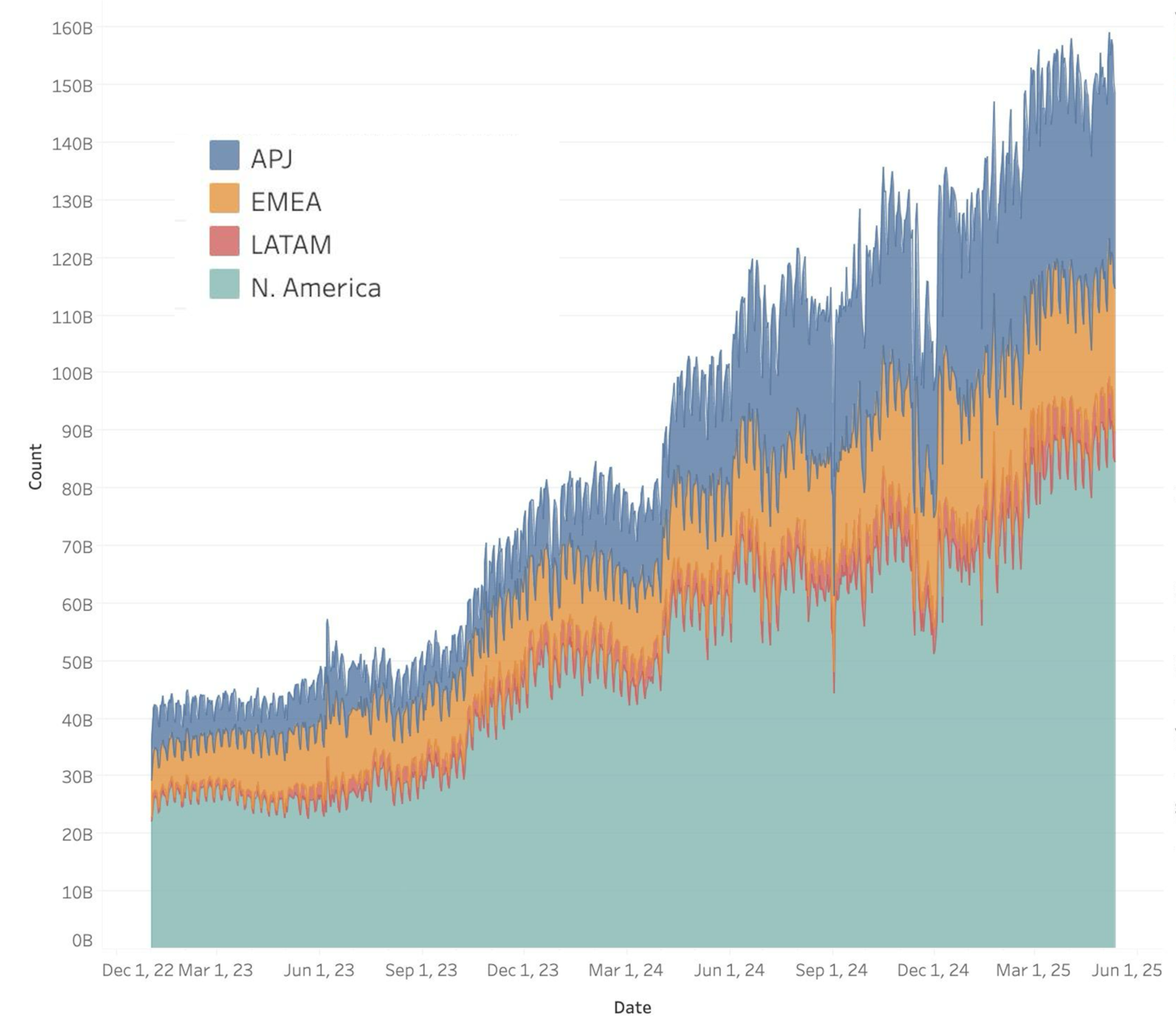Agentic AI Is Here — and It’s Shaping the Future of Bot Defense
Imagine a world in which autonomous artificial intelligence (AI) agents seamlessly optimize and handle everyday tasks for you — from booking reservations to purchasing event tickets, managing vacation logistics, and ordering groceries— all without any manual effort or human intervention.
This is not a far-off future; this is happening now, driven by the rapid adoption of AI bots. Among them, a new paradigm is emerging: agentic AI — a class of AI bots capable of autonomous decision-making that operates with increasing sophistication and independence.
Navigating the shift to intelligent automation
For many businesses today, the focus remains on one simple question when it comes to digital interactions: Is this a bot or a human? But as agentic AI and generative AI (GenAI) evolve, the key challenge will no longer be distinguishing bots from humans, but rather discerning the intent behind an interaction to determine whether abuse may be at hand.
The changing landscape of AI bots
AI-powered interactions are rapidly becoming a part of daily life across industries to help optimize and solve complex tasks. Consider the following scenarios:
A customer uses an AI bot, such as OpenAI’s operator or chatbot, to book a table at her favorite restaurant — an interaction most businesses would want to accept.
That very same AI bot or AI chatbot books all the tables at the restaurant in seconds, disrupting operations and leaving no availability for other diners. This interaction is meant to abuse the system, and the business must have a mechanism to reject it.
This distinction by intent applies far beyond the hospitality industry. Whether it’s concert tickets, railway reservations, retail purchases, or even vacation plans, myriad industries will need to decide what types of actions from AI-driven agents are permissible. The focus will shift to managing user interactions, whether facilitated by bots or humans, based on intent rather than origin.
In fact, this shift has already started. Akamai has observed a rapid increase in the use of AI bots in every region, with 1% of total bot traffic being generated by AI bots (Figure).
The adoption of AI bots and AI chatbots is only accelerating, bringing with it both opportunities and risks. Businesses that fail to streamline and adapt will find themselves unable to distinguish beneficial interactions from those that pose risks of abuse.
From detection to intent-based decision-making
Traditional bot management strategies and workflows have focused on identifying and categorizing traffic. The goal of those strategies has been to enable or block requests based on bot classification, whether by identifying SEO crawlers, search engines, or financial aggregators. Although achieving that goal served businesses well in the past, it won’t suffice in the age of agentic AI and GenAI.
Today’s challenge lies in understanding intent in real time. Businesses will need systems and AI models that go deeper to assess not only who or what is initiating an interaction, but also why. For example:
- Does this interaction serve the business?
- Does it align with the desired customer experience?
- Does it signal abuse and create a risk of disrupting services, exploiting vulnerabilities, or causing harm?
Intent-based decision-making will require organizations to optimize and rethink their approach to bot and abuse management by integrating advanced analytics, behavioral insights, and contextual data into their strategies.
Akamai enables context-rich decision-making
At Akamai, we’ve been at the forefront of tackling evolving threats and enabling businesses to make context-rich decisions in real time. Our Bot & Abuse Protection solutions exemplify this forward-looking approach with large language models and AI.
Unlike conventional tools, our Bot & Abuse Protection solutions are designed not just to detect bots or differentiate humans from automated agents, but also to uncover intent, whether bot or human, for different use cases. By leveraging adaptive advanced behavioral analysis, our solutions track user interactions throughout their entire journey, identifying anomalies that signal abuse or fraud.
For example:
An interaction that blends and functions seamlessly into expected patterns could belong to a genuine user, even if initiated by an AI assistant.
Conversely, an interaction showing abnormal velocity, suspicious repetitive behavior, or misaligned patterns may indicate a fraudster or imposter, regardless of whether it originates from a bot, agentic AI, or a human.
This capability to differentiate genuine users from imposters helps businesses decide with confidence whether to accept or reject an interaction, ensuring they focus their resources on serving legitimate customers.
Embracing the era of agentic AI
The rise of agentic AI represents a fundamental transformation in how businesses interact with their digital environments. It’s no longer enough to determine who or what is on the other side of an interaction. Instead, the discussion must shift to understanding why an interaction is happening and how it fits within the context of a business’s objectives.
Organizations that embrace this shift toward intent-based decision-making in real time will be better equipped to navigate the complexities of AI-driven user interactions. At Akamai, we’re proud to be a leader in this evolution by empowering businesses to adapt to the era of agentic AI with confidence and clarity.



